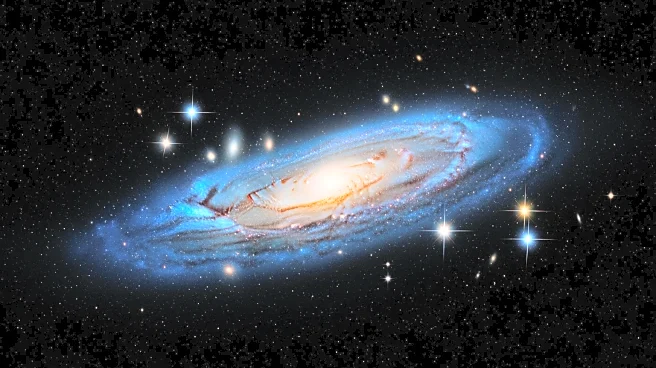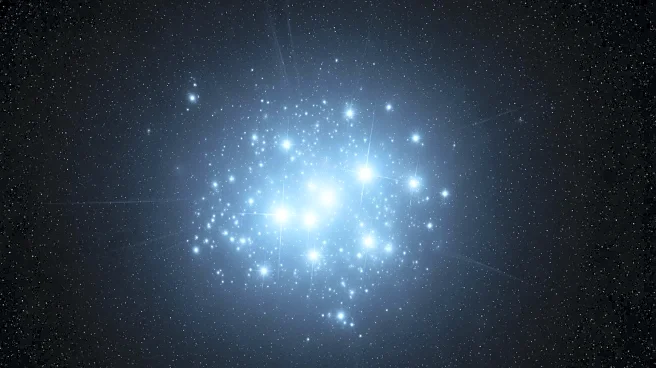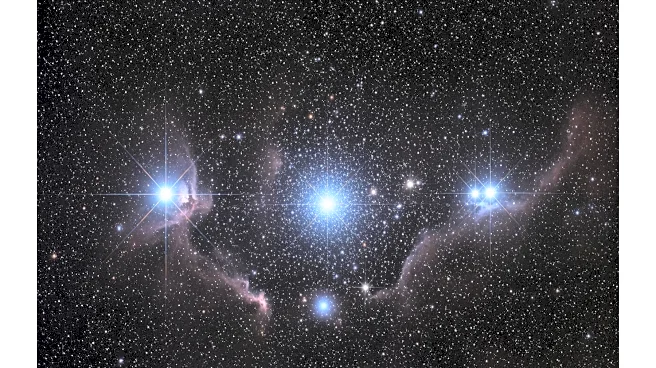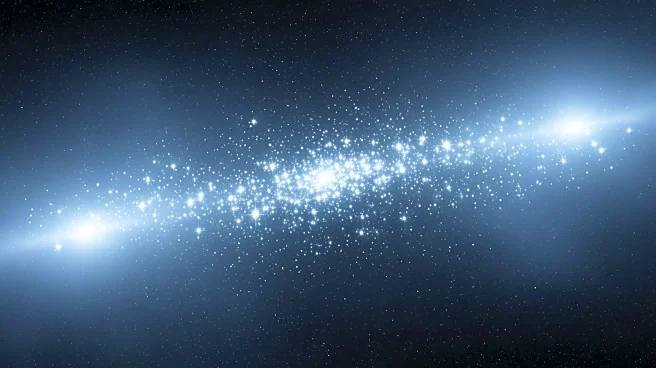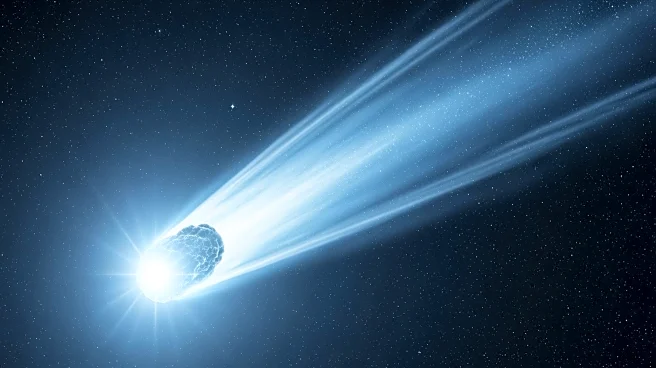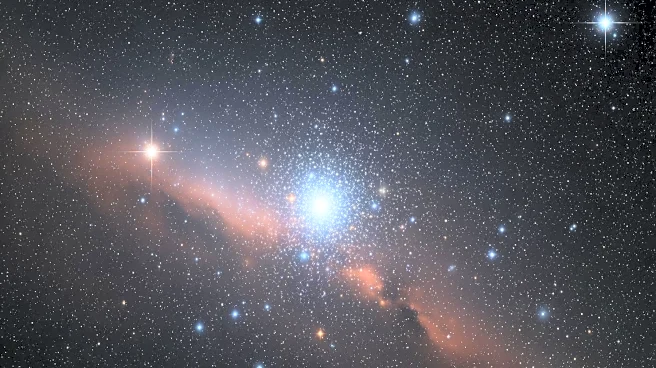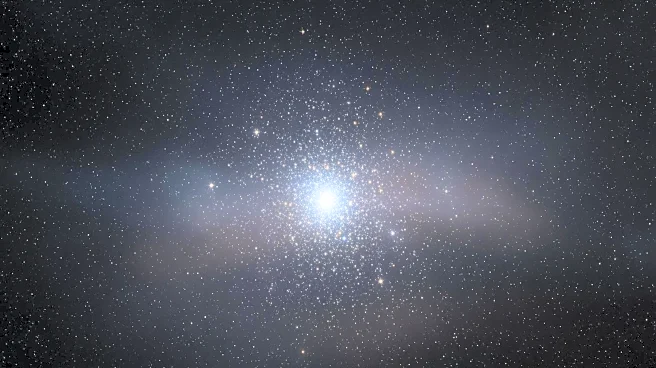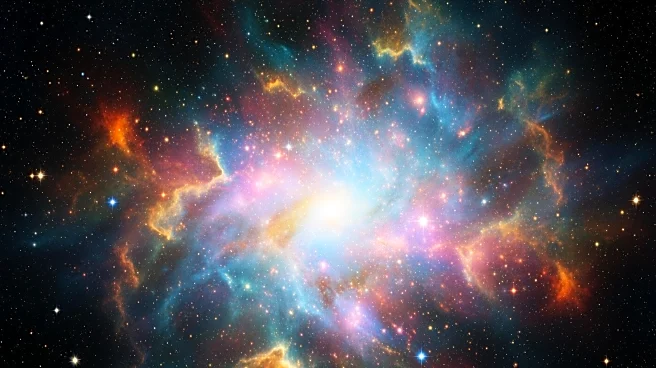What's Happening?
The Hubble Space Telescope has captured a detailed image of the spiral galaxy NGC 6000, located 102 million light-years away in the constellation Scorpius. This image reveals stars of varying ages, with
older, cooler stars appearing redder at the galaxy's center, and younger, hotter stars appearing bluer along the spiral arms. The data was collected as part of a survey of recent supernova explosions in nearby galaxies, with NGC 6000 having hosted two supernovae in 2007 and 2010. The image also inadvertently captured an asteroid from our solar system, visible as thin yellow and blue lines due to multiple exposures.
Why It's Important?
The observations made by the Hubble Space Telescope provide valuable insights into the lifecycle of stars and the dynamics of galaxies. By studying the aftermath of supernovae, researchers can better understand the masses and characteristics of progenitor stars, which is crucial for astrophysical models. The ability to discern faint supernovae years after their explosion helps refine predictions about stellar evolution and the potential for future cosmic events. This contributes to the broader field of astronomy by enhancing our understanding of the universe's structure and the processes that govern celestial bodies.
